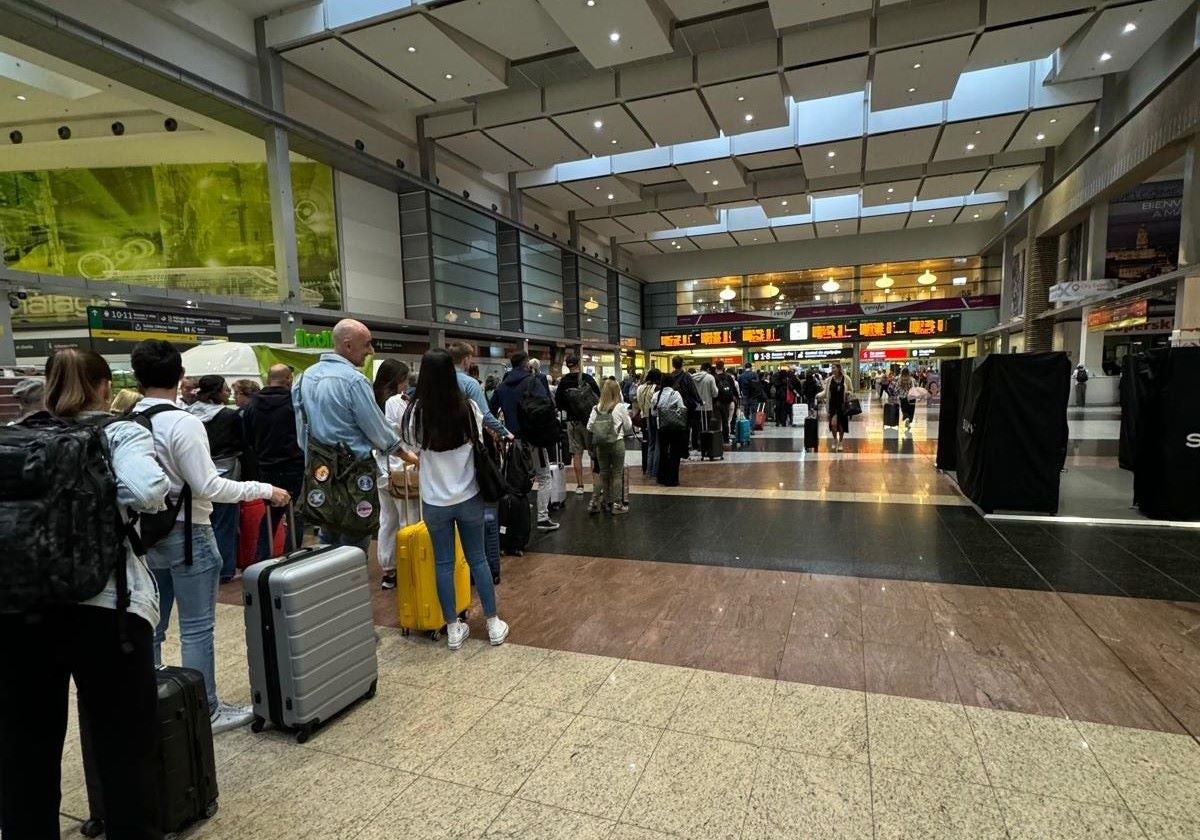From two and a quarter hours to more than three: Why are trains from Malaga to Madrid now slower?
Renovation work on tracks, overhead lines and safety systems, carried about by Adif, reduce the maximum speed in several sections
When it reached its maximum level of service, after the first few weeks of running (at the beginning of 2008), it was common for many of the direct trains between Malaga and Madrid to have a journey time of two hours and 15 minutes, which meant up to a quarter of an hour less than initially scheduled.
More than 16 years after the historic milestone of the arrival of the high-speed train to Malaga, the reality is quite different. Nowadays, the railway connection offers advantages, but also clear disadvantages. Among the first is the fact that the two operators now competing on the route have set a record number of departures, which from June onwards will reach 21 departures in each direction almost every day, as SUR has been reporting.
In addition, travel is now significantly cheaper than it was a few years ago. The direct consequence of competition has been a drop in prices. A few days before the start of June, it is still possible to find seats for next week on Renfe's AVE and Avlo from 34 euros and with an average price of 42.40 euros.
In the case of the first private competitor, Iryo, average fares are still generally cheaper, with tickets for the same dates ranging from 38 to 48 euros. This is a substantial reduction compared to before the opening up of the market, when the cheapest fare was over 60 euros.
Longer journeys
On the other hand, two key aspects, also linked to each other, come into play: reliability and travel time. Regarding the former, last year there were repeated delays due to breakdowns, both in the infrastructure and in the trains, although it is true that so far this year complaints have fallen considerably.
But what has not yet been achieved is a return to the competitive journey times that the high-speed train offered in its early days. From two hours and a quarter it has risen to more than three hours for some journeys. In the best cases, the journey now takes at least two hours and 45 minutes. And it does not depend on whether Renfe's AVE 112 or Iryo's Frecciarossa services are faster or slower, because both companies take practically the same time (depending on the stops).
So, what is the reason for this delay? The reason lies in the fact that the High Speed Line (HSL) from Malaga to Cordoba shares the route to the Spanish capital with the Seville HSL, which was the first to be opened in Spain (1992), and is obsolete.
The railway infrastructure administrator (Adif) has spent several years and hundreds of millions of euros to renovate platforms, viaducts, tracks and electrical and signalling systems. And it still has work in progress, which also has to be carried out in the summer season to ensure that it does not rain.
Works without cutting off traffic
These works, many of them complex, are carried out without interrupting traffic on any day, with the tracks not only operational, but also with more than double the journeys than before (in addition to those in Malaga, Seville and Granada). For this purpose, night-time maintenance lanes are used, although speed limits are imposed on these sections. However, sometimes incidents occur during the work that affect reopening the following morning.
Currently, works are under way (or will be during the summer) on seven sections, and timetables and commercial routes have been adapted to these, in order to make the renovation compatible with the operation, according to Adif sources. The positive note is that this year there will be fewer limitations than in 2023, when there were 32 kilometres of single track. The bulk of the renovation work has already been carried out, and several stretches are close to completion.
This is the case, for example, with the actions affecting the structures along 200 kilometres between Yeles and Conquista (provinces of Toledo and Cordoba), which must be completed by 7 June. And those from Mora to Malagón, with a maximum speed limit of 160 km/h (due to be completed on the same date).
Others will be extended further, such as those from Calatrava to Conquista, for the renovation of 70 kilometres of overhead lines (until 12 July); from Villanueva de Córdoba to Almodóvar del Río, for the same purpose (until 9 August), and Conquista-Hornachuelos, for the laying of fibre optic cables, until 27 September.

